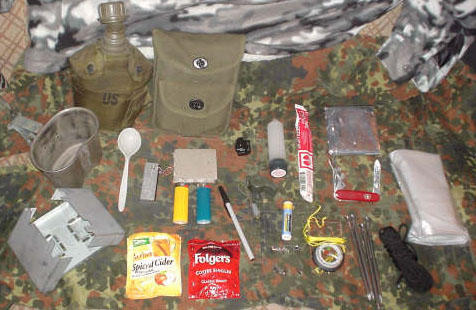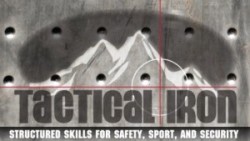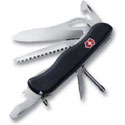Thank goodness for my vehicle preparedness kit. Recently I was heading to a rural mountain security installation when my vehicle broke down. As I drove up a winding remote dirt road of steep grade, my car simply died. Heat gauge… temp slightly higher than normal. Oil… a little low, but not less than a quart. Spark…. Yes there is battery power, cables good, etc. No easily discernible culprit was immediately identifiable. Either way the end result was the same; Stranded!
Image courtesy of Naypong / FreeDigitalPhotos.net
This was a somewhat isolated area, and it appeared to be mostly mid priced mountain homes scattered about every ½ mile. However, there were “mountain shacks” (meaning a run down, uncared for or untended property) clearly visible which means that not everyone who lives up there has money or an upright citizen “I’m here to help” attitude. In fact some people up there appear to be openly hostile to people who don’t belong. Luckily the day was young, being only around 1:30pm, and there was plenty of time to figure out what to do.
Step 1. Call Wife and let her know where I am, where I was headed, and the fact that I was broken down and might need extraction. Problem with this plan of action is that she works on the opposite side of the state literally being about 2 and a half hours away from me at stranded location during regular daylight traffic. Notice fortunately that I was able to call my wife using my fully charged cellular phone. Amazingly, I got a signal in the mountains at all, and even more amazing that my battery was charged! I did however forget my 12v cell phone charging cable which was a bit of a concern. Cellular coverage in the mountains here forces your cell phone to constantly roam for signal which kills the battery considerably faster than normal use.
Step 2. Get off of the steep grade and find level ground on the shoulder where I could more safely ascertain my vehicle problem. This was NOT easy. My vehicle was nose facing up the mountain, packed with tools, with no power. To top that, the blind curve of the windy dirt road, trees, and drop off presented a major safety issue to backing up! I was alone with no orange cones, flares, reflectors, or orange tape to make my presence known to those ready to round that corner at who knows what speed. I turned on my hazard lights and opened the hood which is the universal language of “my car is broken down.” I prayed and on the inside of the curve backed down slowly, being careful not to end up in the inside ditch area and being cautious of the trees. Eventually after a LONG time I made it to level ground on the shoulder in a lighted area.
NOTE: You may be wondering why steps 1 and 2 are not reversed. Basically if I was to move the car, then contact my Wife. This assumes that I don’t back off the cliff side of the road, which would force me to call from the bottom where there is no signal and quite possibly I could have suffered severe injuries if I did slip off the edge. Therefore, I called first then moved the vehicle! Of course a lumber truck could have barreled up the hill as I chatted with the Wife on the phone… luckily this was not a busy road and my vehicle was far enough up the hill and past the curve that visibility ensured time for drivers to slow down, or creep around me. I didn’t encounter any vehicles until much later BTW.
Step 3. Get mobile again. Not as easy as it sounds here. The problem remained a mystery up until after about 40 minutes it just started when I tried it. I put a little oil in and checked other fluids, battery, etc again and also unloaded the security install tools to get at my auto tool kit. Beyond that, I didn’t do any real mechanical work to find the problem. I did all the basic stuff as mentioned. When it did finally start immediately I took the opportunity to turn around and head back to the shop. The problem has not reoccurred so I am still baffled. A buddy of mine expressed a similar problem with his past similar model vehicle which may be a known fuel pump issue. Vapor lock is most likely not the issue as the vehicle is fuel injected. Obviously I am not a mechanic so gear heads out there go easy on the “did you do this, that, the other thing….”.
There were a few things that came up during this whole fiasco that made me want to write on vehicle preparedness kits. The main thing that really comes to the forefront is the ability to defend one’s self when stranded in the woods. I mentioned earlier that there are “mountain shacks” in the area I was stranded in. The shoulder that I eventually coasted downhill into was under such a place. There were big dogs howling at me from up there the whole time, and a gentleman stood at his door and never took his eyes off me as I fiddled with my vehicle. Obvious or not,a service vehicle is still out of place and who knows what kind of things this guy was protecting. Possibly a drug factory, or simply protecting his property by observing an out of place situation. His body language, dogs, and barbed wire fence made the fact clear that it was not a good idea to go to him for assistance. Faded Private Property signs sealed the deal for me, so I stayed well away.
Either way my intuition told me to stay aware, and I felt comforted knowing that I could protect myself. When constructing your kit include a legally owned firearm, or at least Pepper Spray by a known quality manufacturer. Beyond that, I knew my exact location due to my brand new GPS unit. That was actually very comforting. I could have given my Wife exact latitude and longitude if I so wanted. The GPS also helped me navigate the windy mountain dirt roads. As back up, I have a map book of our state that is very precise. It is a 2005, but is pretty up to date as far as main roads are concerned. I really need to get the latest book, however. They offer the book totally laminated which makes every page waterproof, tear resistant, and easy to draw routes on with dry erase markers!
My main work van was in the shop, so much of my gear was not in this temp vehicle….Including my small survival kit with compass, matches, etc. I did have a few things however.
Here is a breakdown of what I actually had when I was stranded that day:
Cold Steel survival shovel
Kabar knife
Battery jump starter w/flashlight
GPS w 12v charger kit
14v flashlight w 2 spare fully charged batteries by Dewalt
Flannel insulated jacket
Mechanic Gloves
Plastic painters’ sheet
50 foot nylon twine
I also had my EDC kit, so basically I had a number of ways to signal, start fire, make shelter, chop wood, and a variety of good light sources. The trunk contained tools and parts mainly including basic socket set, jumper cables, gas can, oil and other fluids, new car battery, & Chilton’s repair manual. I also had a jack, spare tire (flat as it goes), selection of assorted hand tools, tow rope, and a few spare turn signal bulbs. For food I had a granola bar and water bottle with 20 oz water in my briefcase. Food and water preparations were not so good if I was stuck here overnight. I could have run out of gas, gotten a flat, or simply gotten stuck on the road somewhere and easily been there until after dark which thankfully did not happen.
Obviously, if I had a survival kit that would be a big plus. I added that when I got back. Also more water and “pogey bait”. This means a few 12 oz water bottles and some more granola bars. My Wife very wisely carries a large bag of beef jerky in her car. I’m going to add that as well to the granola bars. As mentioned, the cell phone charger would be a very nice thing to have in 12v; something which I normally have but forgot this time. In addition, a wool blanket or sleeping bag would be really great to add. I also keep a large roll of duct tape, and a coffee can in the trunk that can be made into the traditional hobo stove if need be. My survival kit has the Esbit stove and canteen cup, but redundancy is important in an emergency as we know.
Ultimately everything worked out okay in the end. The job was re-scheduled and completed, and my vehicle is running fine. There are some pretty big holes in my car kit, which are being fixed as time and money allow. Here is a list of the desired end result kit for my vehicle.
VEHICLE PREPAREDNESS KIT
Part 1 Survival
• Small Portable survival kit, ammo bag
• Survival Knife currently Ka-bar, soon to be a Cold Steel Trailmaster
• Cold Steel Survival Shovel
• Spare boots, knit cap, wool socks, gloves, jacket, sunglasses, and nylon jumpsuit
• GPS w/12v charger, Laminated State Road Map book
• Rechargeable flashlight w red lens, rechargeable spot light
• Tarp, nylon rope, nylon hammock
• Wool Blanket
• Bottled Water, Jerky, granola bars, instant soups, any lightweight portable food
(In Colorado we experience extremes in heat and cold as well as dryness and moisture so food must resist anywhere from 10 below zero to 105 above!)
• Cash in coins and paper currency
Part 2 Vehicular
• Complete replacement fluids
• Jumper cables, and battery jump starter
• Tow rope
• Spare bulbs
• Repair Manual
• Socket set, hand tools, jack
• Funnel, gas can, carpet strips, chains
• Flares, orange tape, reflector
• Duct tape, other repair gear
• Spare tire, fix a flat spray
Part 3 Communications
• Radio am/fm
• Portable wind up radio
• Cell phone, spare battery, 12v charger
• CB band radio
Part 4 Personal Defense/Hunting
• Glock 9mm Model 17, 2 spare magazines
• Kel-Tec Sub2000 9mm Carbine, 2 spare magazines
• Winchester Defender 12 gauge, assorted rounds
• Pepper Spray
Everyone has a different take on what is essential, and we are each limited by the storage space of our vehicle. My entire kit listed here fits in a sea bag, which is a canvas duffel bag but heavier duty. The Defender breaks down with a regular screwdriver and the Sub2000 folds by design. Of course, the vehicle tools are stored in the trunk area and would stay with the vehicle if I am forced to hike out. My small survival kit fits on my belt, and is the size of a camera bag with a canteen and canteen cup on the other side. My EDC (Every Day Carry) kit fits in my pockets and I always have it on me.
This vehicle preparedness kit is designed the way it is due to the nature of my job. I can end up on extreme sides of my state; either mountains or desert, dry or snow filled, muddy dirt road or iced up highway. Also, I can end up in some pretty off the beaten path places. I have literally been in a town occupied totally by a “gang”, for instance. When dealing with firearms in your kit pay attention to state and city law. For example, in Denver I can’t have the two long guns even broken down and unloaded in my vehicle. The State and other jurisdictions see things in a more reasonable light. Just be sure to follow the letter of the law. Obtaining a concealed carry permit may make this easier to do depending on your state.
UPDATE 2013: I have added and removed a few things that made my kit more compact.
Added:
(2) LED AAA Flashlights, 12v DC and 120VAC cell phone charger, (2) Wool gloves, (2) knit caps, AM/FM Short-Wave radio, pack of spare AAA batteries, updated Cold Steel GI Tanto, 3-ft bolt cutters, small sledgehammer and a spare 1st Aid Kit.
Removed:
Winchester Defender and Kel-tec Sub2000
Removed shotgun and carbine to save weight and space in order to add extra tools.











Recent Comments